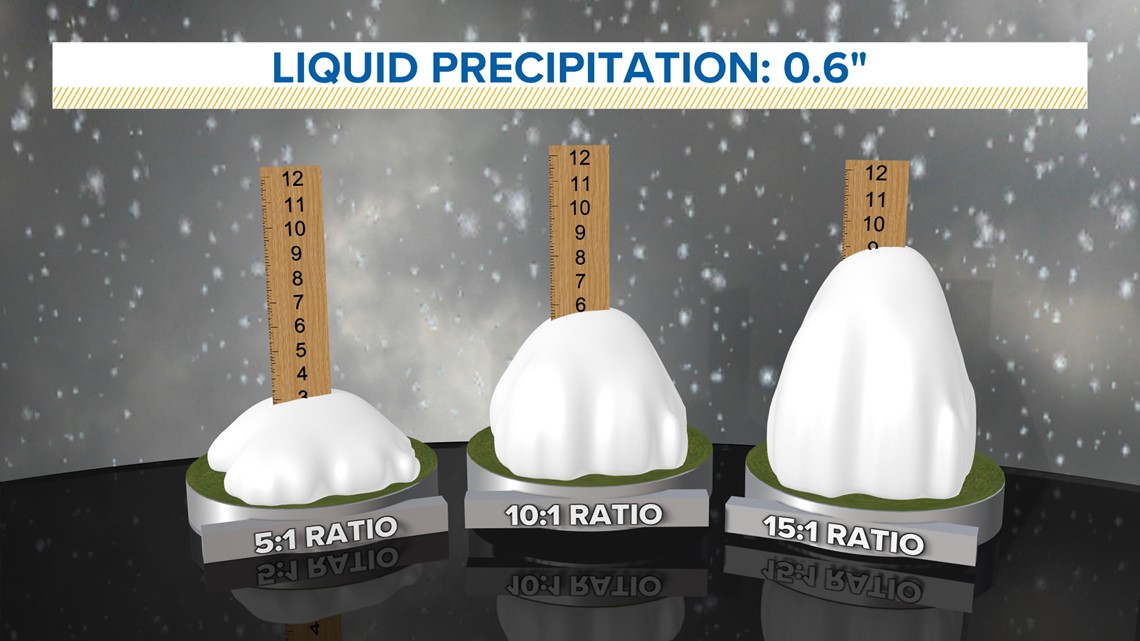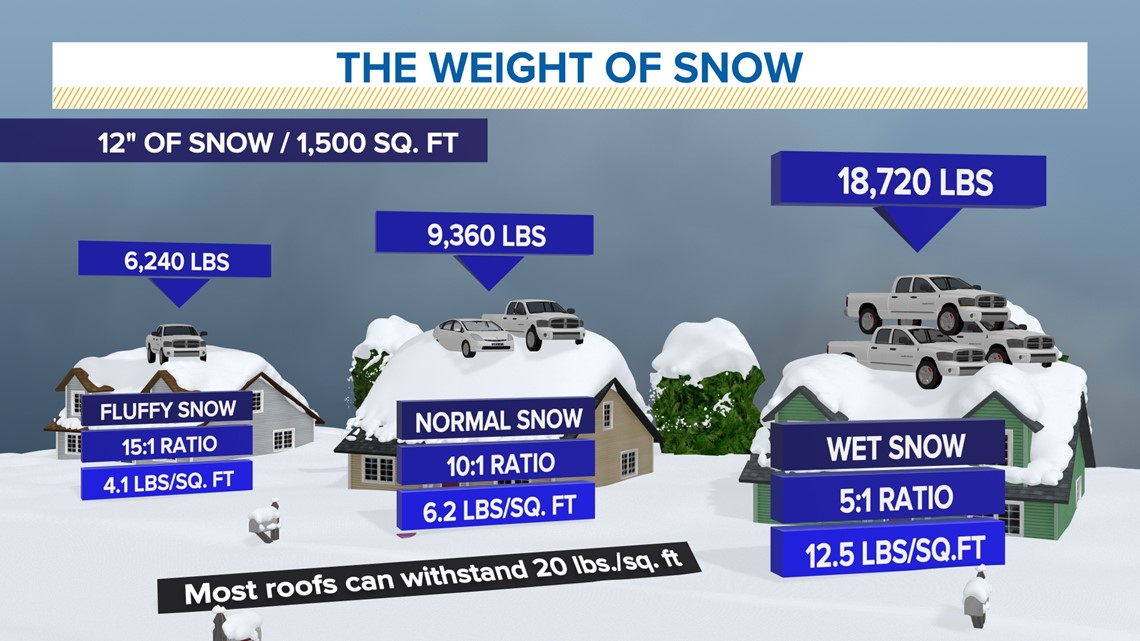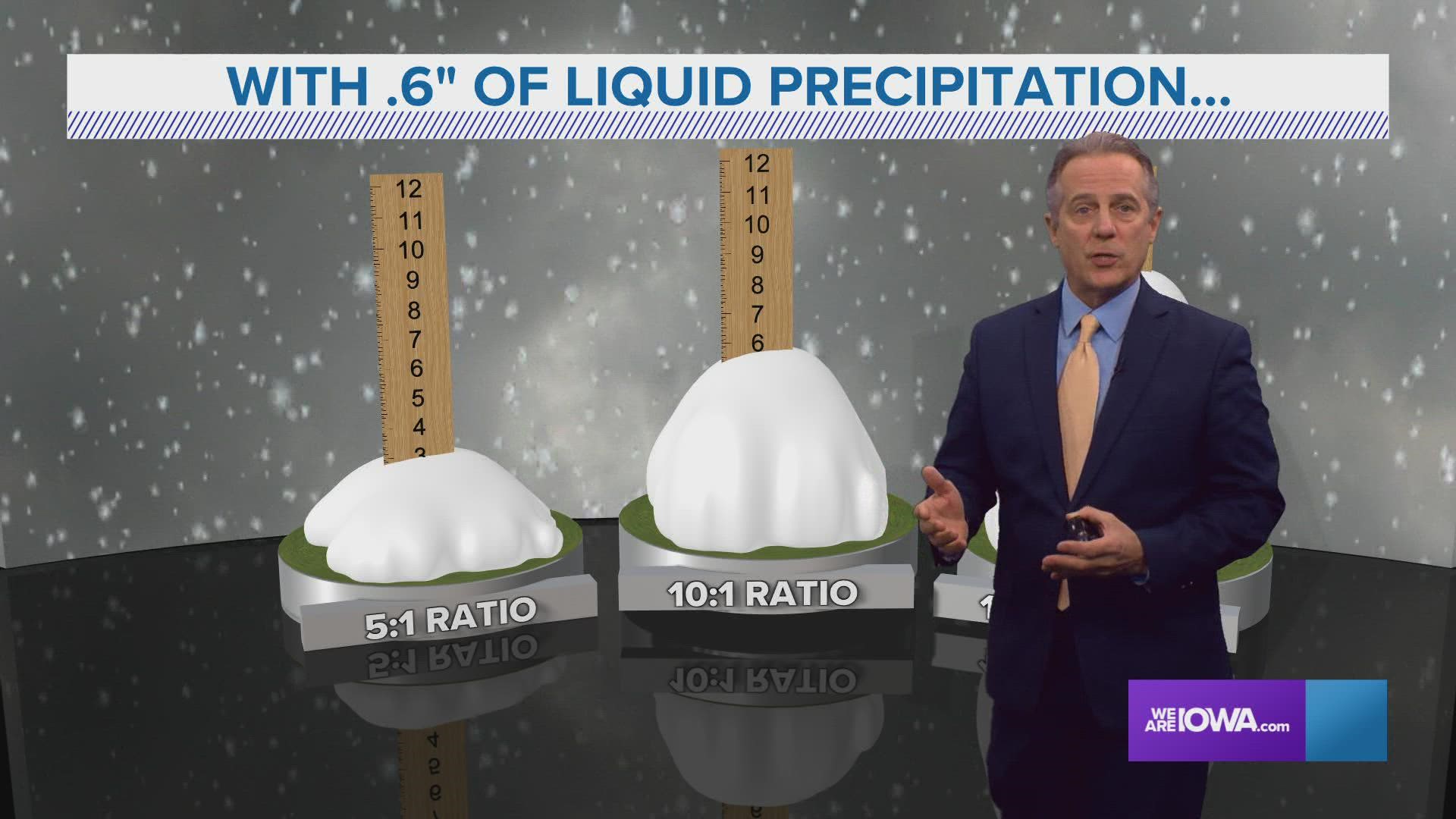DES MOINES, Iowa — Forecasters look at a lot of variables when putting together a snow forecast.
One of the most important things to consider is snow ratios.
Snow ratios refer to the amount of water contained in a column of snow, and are determined by collecting and melting snow in a rain gauge.
For example, if 5" of snow melts down to 0.5" of liquid, the snow ratio is 10:1 (10" of snow for every one inch of liquid).
An average snow has a ratio of 10:1, but the ratios can vary widely depending mainly on the air temperature and humidity.
Snow falling in a dry, cold air mass typically has higher snow ratios around 15:1 or 20:1.
This type of snow tends to take up more space when it accumulates and can pile high quickly.
Snow ratios are typically lower when the temperature and dew point are closer to freezing. This type of snow is normally much heavier and wetter.
Knowing how much liquid precipitation will fall is only part of the puzzle for forecasters.


Snow ratios aren't just important for forecasters though. Snow with a low ratio is a lot heavier and more difficult to shovel than high-ratio snow.
Low-ratio snow can also put a lot of strain on roofs.
The average roof can withstand 20 pounds per square foot. That is typically not a problem when there is 12" of snow.
However, 24" of snow with a 5:1 ratio equates to 25 pounds per square foot.
On a 1,500 square foot roof, that equates to over 37,000 pounds, or the weight of six pickup trucks.


More from the Local 5 Weather Lab
Understanding the snow ratio for a particular winter storm is an essential element in predicting how much snow will fall in any given area.
It all comes back to the amount of available moisture and precipitable, or liquid, water in the atmosphere.
Determining the snow ratio is an often complicated process, which is why forecasting snow totals can sometimes give meteorologists a headache.
► Download the We Are Iowa app
► Sign up for Local 5's "5 Things to Know" email newsletter
► Subscribe to Local 5 News on YouTube
Watch more Local 5 Weather Lab segments on YouTube

